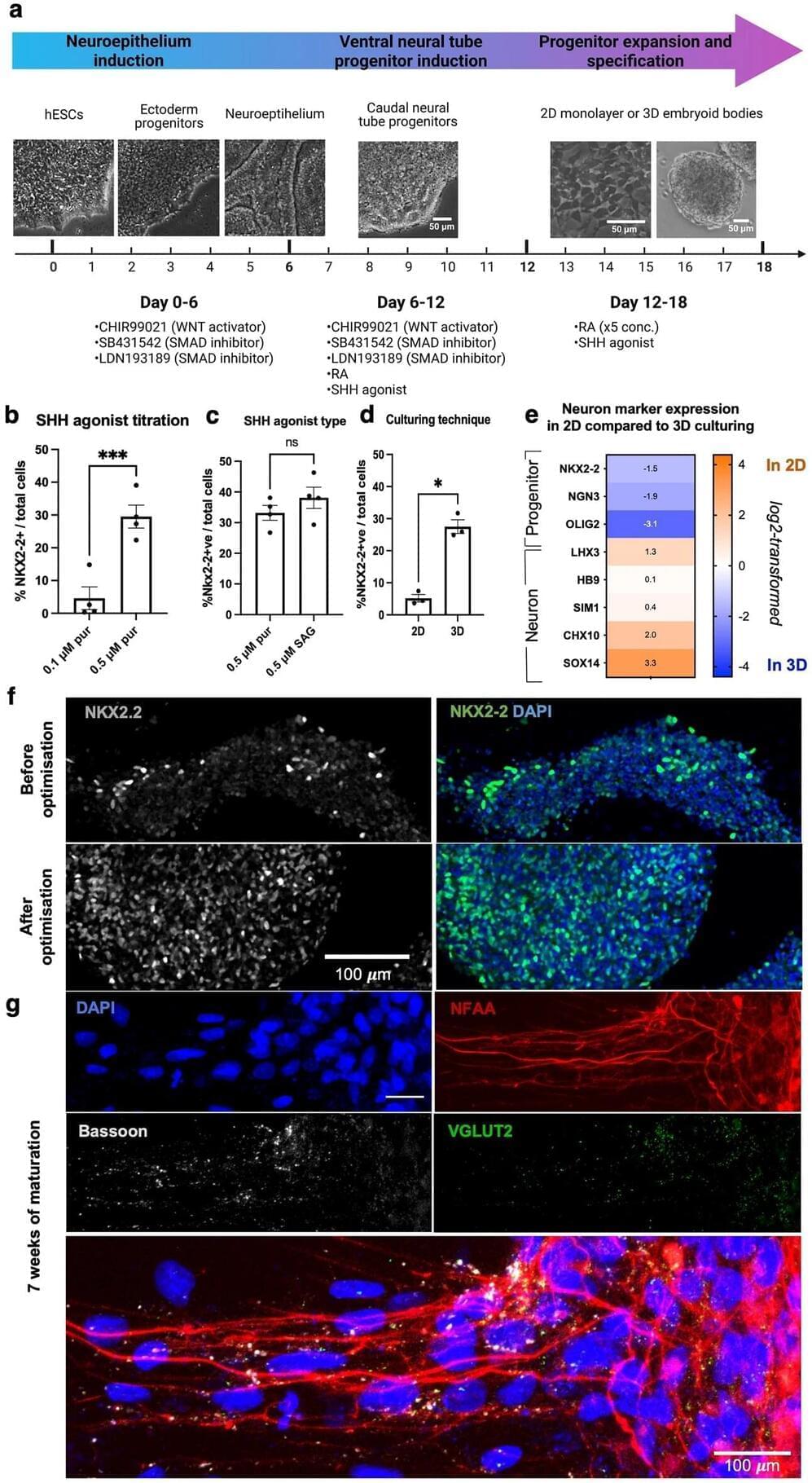Injury to the spinal cord often leads life changing disability, with decreased or complete loss of sensation and movement below the site of injury. From drugs to transplantation, there are many scientific advances aiming to restore function following spinal cord injury.
One promising approach is the use of stem cell derived neurons to replace those damaged. New research from the Centre for Gene Therapy & Regenerative Medicine and Centre for Neurodevelopment at King’s College London hopes to improve on this approach by providing pure populations of neurons made from stem cells.
The spinal cord is a delicate structure, with neurons carry messages from your brain to the rest of your body to allow movement and sensation. Integral to this system are interneurons, or the cells that relay information between your brain and other neurons. Research has previously shown that transplanting a class of interneurons, ventral spinal interneurons, to treat spinal cord injury in animal models provides promising recovery of sensory and motor function.
